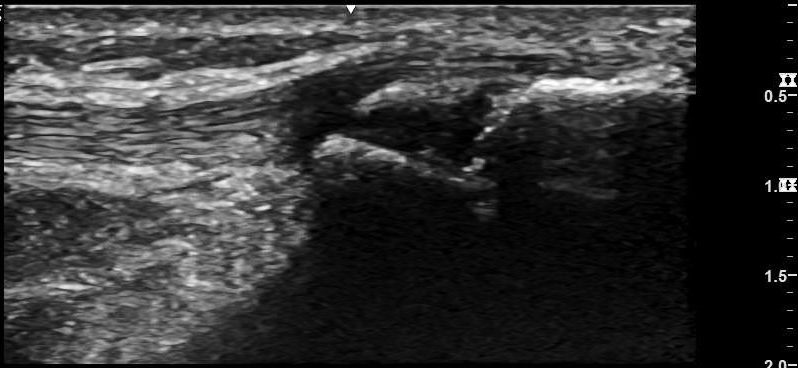Case Study:
A 19-year-old female athlete presented to the sports medicine clinic with chief complaint of pain and swelling in both knees in the region of the tibial tuberosity after a football match. There was no history of trauma. A mid longitudinal view was obtained by scanning in the midline in the region of the tibial tuberosity (region of swelling) and the patellar ligament.

A. Cellulitis.
B. Fracture of patella.
C. Abscess.
D. Osgood Schlatter’s disease.
Answer: D. Osgood Schlatter’s disease
Explanation:
Osgood Schlatter’s disease is a chronic condition seen in active adolescents. It is more commonly seen in adult boys. It is seen bilaterally in 25-50% of affected individuals. Onset in females is generally seen at age 8-12 years and 10-15 in males.
Patient’s generally present with pain and swelling in the region overlying the tibial tuberosity. The symptoms are exacerbated with exercise.
Ultrasound findings of OSG are:
- Infrapatellar bursitis.
- Fragmentation of the ossification center.
- Thickening of the distal patella tendon.
- Swelling of the unossified cartilage and soft tissue.
Ready to begin your POCUS journey? Check out our many certificates and certifications here.





















